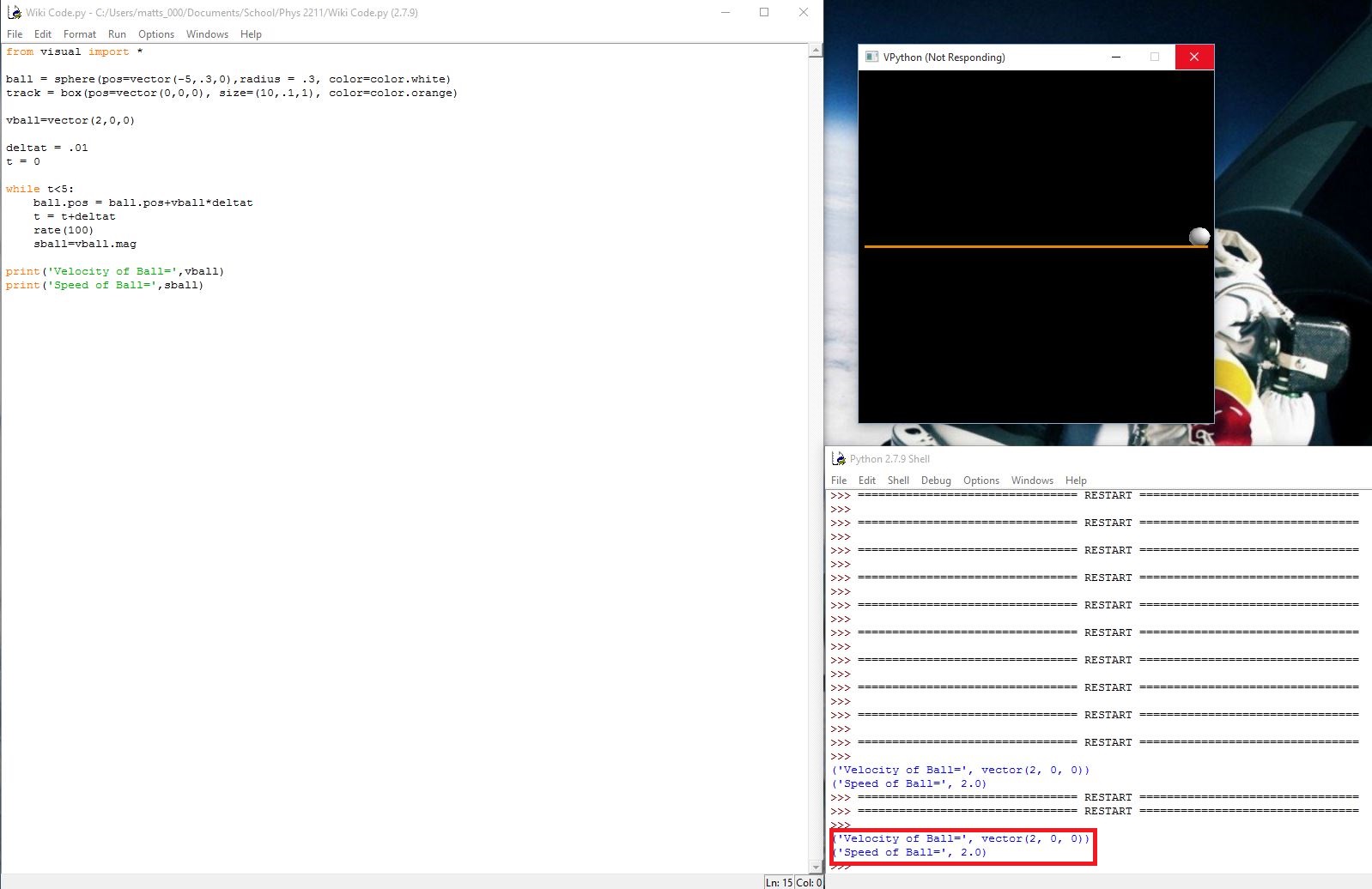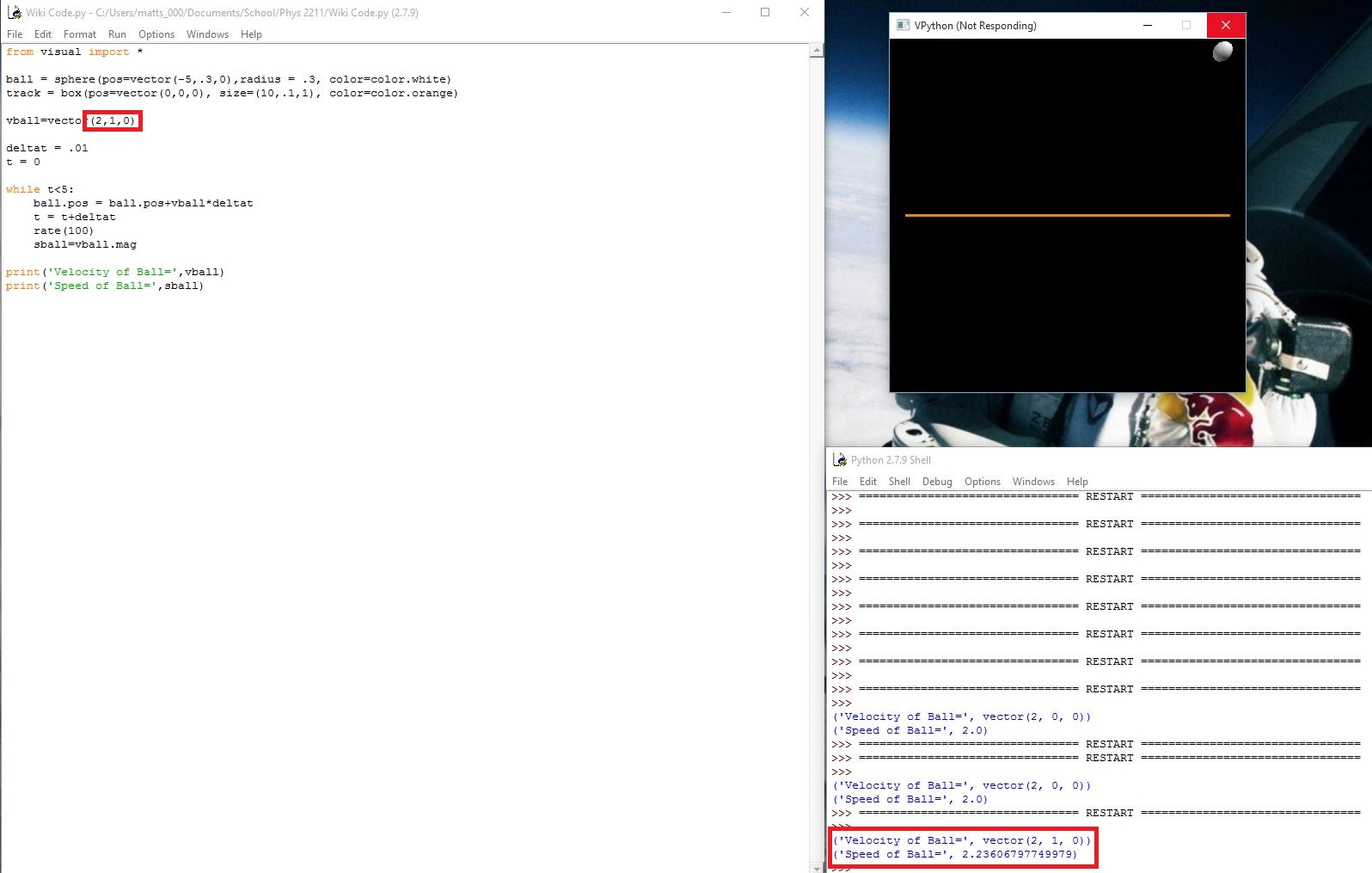Speed and Velocity
by Matt Schoonover
Speed and Velocity
Speed and velocity are used fairly interchangeably in casual conversation, but when it comes to physics the two can mean vastly different things. Velocity has direction and therefor a vector quantity. Speed is the scalar form of velocity and therefor has no direction.
The most basic equation for velocity is
From this comes the average velocity equation of

A Mathematical Model
In order to find the velocity of an object one must find the change in distance over the change in time. In order to find the speed of an object one must find the magnitude of the velocity. Both are measured in meters per second.
A Computational Model
To help demonstrate the difference between the two, I wrote some simple code to model the motion of a ball moving on a track.
In the first picture, the velocity is only in one direction, so the speed and velocity are the same.

However, in the second picture, the velocity is in the x and y direction, so the speed and velocity are not the same.

Unit Vectors
Unit vectors are also closely related to velocity and speed. Basically a unit vector is a unitless vector with a magnitude of 1 unit that points in the direction of a given vector. Unit vectors can be used to switch between speed and velocity.
The equation to find the unit vector of velocity is simply velocity over speed, or

Multiplying the speed by a unit vector will give you velocity.
Simple Examples
1. If a person walked a distance of 10 meters in 5 seconds, what is their average velocity?
Solution: Using the average velocity equation will tell you that the answer is 2 m/s.
2. If someone traveled with a velocity of 13 m/s for 3 minutes, how far would they have traveled?
Solution: First convert 3 minutes to seconds(180). Then use the velocity equation to solve for distance. You should get 2,340 m.
3. What is the unit vector for the velocity vector <3,4,0> m/s?
Solution: Use the speed equation to get that the speed is 5 and the unit vector equation to get a final answer of <3/5,4/5,0>
4. What is the velocity of an object if the unit vector is <3,2,1> and the speed is 5 m/s?
Solution: 5 m/s * <3,2,1> = <15,10,5> m/s
Connectedness
- How is this topic connected to something that you are interested in?
- How is it connected to your major?
- Is there an interesting industrial application?
See also
- Kinds of Matter
- Detecting Interactions
- Fundamental Interactions
- System & Surroundings
- Newton's First Law of Motion
- Newton's Second Law of Motion
- Newton's Third Law of Motion
- Gravitational Force
- Terminal Velocity and Friction Due to Air
- Simple Harmonic Motion
- Speed and Velocity
- Electric Polarization
External links
- A physics resource written by experts for an expert audience Physics Portal
- A wiki book on modern physics Modern Physics Wiki
- The MIT open courseware for intro physics MITOCW Wiki
- An online concept map of intro physics HyperPhysics
- Interactive physics simulations PhET
- OpenStax algebra based intro physics textbook College Physics
- The Open Source Physics project is a collection of online physics resources OSP
- A resource guide compiled by the AAPT for educators ComPADRE
References
Matter and Interactions, Modern Mechanics, Volume One 4th Edition by Chabay and Sherwood.
